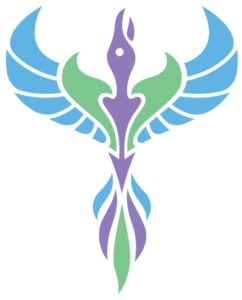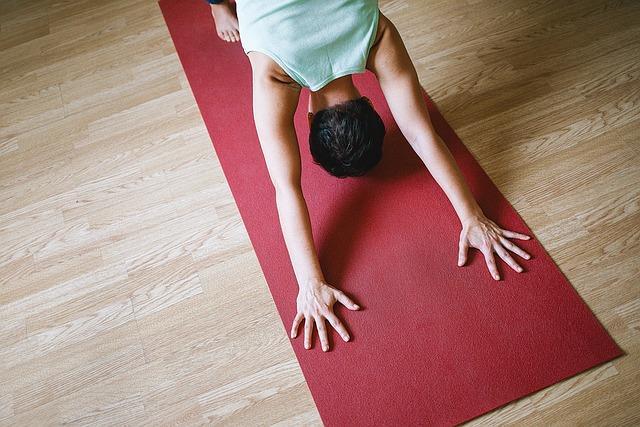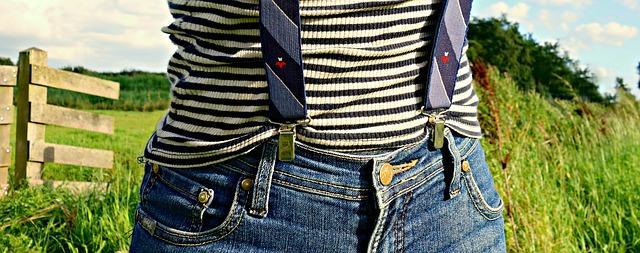Posts Tagged ‘posture’
How to Go About: Looking Confident and Feeling Your Best
How we can make this position the new norm
It begins with awareness- now that you know what it feels like to have your postural muscles engaged and holding you upright, we want to work to make this your new normal. At our office in Park Slope, we work with you to help you establish good postural health. This means:
- Providing spinal adjustment to realign the spine, improving range of motion and reducing pain.
- Focusing on stretching and elongating overly-tight postural muscles which are suffering from overuse in poor posture.
- Focus on strengething under-used phasic muscles to lend support and stability to the core.
If you are interested in changing your postural health for the better, give our office in Brooklyn a call to schedule an appointment today.
The Importance of Postural Transitioning
Using postural transitions to your advantage.
Chances are you don’t want to remain locked into a stiff and stagnant position. But many of us end up this way because over time, our body learns that this is what we want, and our muscles respond to make this unhealthy posturing feel more comfortable. This is a trap! Even if your body feels better slouching, you are causing innumerable damages to your spine. At Community Chiropractic & Acupuncture, we want people to overcome stagnation by awareness. An ergonomically aware person should make at least one purposeful movement every 20 minutes of sitting or standing. These can be slight, like simply raising your feet onto a footrest from the floor, or stretching the back; or they can be more purposeful like standing up and walking to get a drink of water.
Postural transitions keep your core engaged
If your job involves a whole lot of one position, make sure that you listen to the signs of stiffness before they give way to pain. If you are interested in optimizing your work life and finding more ways to keep your body healthy despite the demands of your job, give our office in Park Slope a call to schedule an appointment today.
Do you have a Forward Head?
Forward head posture is a modern conundrum
When interacting with a mobile device, chances are your posture is less than perfect. Unless you have the perfect ergonomic set up at all times of the day, you are likely to slip into a position where you are slumped forward or craning down over a cell phone. This behavior conditions the muscles of our neck into a forward head posture, away from its center of gravity, the spine.
Forward head posture is problematic because for each inch your head is held forward, another 10 pounds of pressure is added to the spine.
Now consider that many people we see are walking around with their heads forward 2-3 inches without even realizing and you begin to see how pervasive the problem is in our society. If you carry this kind of weight around, you are also carrying a greater likelihood for degenerative spinal conditions and painful muscle strain.
Adapting for our spine’s sake
Do you have forward head posture? Perform the wall test by standing straight up against a wall with heels shoulder-width apart and shoulder blades touching the wall. Does the back of your head touch the wall? Be honest. If not, this is a good indicator that you are carrying your head forward throughout the day. If this is the case, don’t freak out! It is a reversible problem; the sooner you start the better!
Approaching the Forward Head Problem
Because you have repetitively trained your neck muscles into holding your head forward, we need to train them differently. There is a likelihood that certain muscles such as the occipitals and sternocleidomastoid are overly-tight. We focus on releasing these muscles from tension and strengthening the muscles that matter for holding your head centered atop the spine. Behavior and awareness are equally important- if you notice your head creeping forward throughout the day, make a correction. Soon enough your head will naturally rest where it is supposed to be-atop your body!
Dr. Karen Thomas, D.C.
Posture Hacks
Posture is a constant challenge
Even if we know the basics of “perfect posture,” we still find ourselves slumped over at different points of the day. What we fail to realize is that we are fighting a losing battle. Of course the human body was never meant to sit for so many hours, so even if you could maintain perfect posture for 8 straight hours, your body would still be incurring some damage.
The trick is to change your position regularly throughout the day
But this is highly unrealistic for many workers, so instead we have come up with a list of tricks to keep posture on your side.
- #1 most important: pull your shoulders back and let them relax. The computer has a way of making us look like hunched over gremlins, and pulling your shoulders back defeats this position completely.
- Following this, check that your ears are aligned with your shoulders. This will stop your head from creeping forward and destabilizing the spine.
- Place a pillow or a jacket in the curvature of your lower back to help maintain a neutral posture.
What you will notice right away is that your body, even in this new position, begins to feel stiffer even more quickly than when you were slouching. It’s OK! This is your body adjusting to a normal position and the transition period is a small price to pay for the benefits of proper posture.
Most important of all, listen to your body.
If it feels stiff, stretch. If you notice your shoulders creeping, adjust. If your circulation feels stagnant, get up and have a quick walk. You get the idea! But will you act on it?
Dr. Karen Thomas, D.C.
Deskercise: Fitness on the Job
Deskercise is about being a fitness ninja
The first step is realizing how harmful a sit-heavy lifestyle is, especially for your spine. Studies show that even 2.5 hours of vigorous exercise a week does not fully offset the harm done by sitting 70% of every weekday. So let’s be sneaky: add in a bit of strengthening and movement without even standing up by deskercising.
When the thought occurs to you, try running through this deskercise checklist.
-
Ab squeeze: tighten abdominal muscles, hold 5-10 seconds, release. Repeat 15 times.
-
Glute squeeze: tighten glutes, hold 5-10 seconds, release. Repeat 15 times.
-
Shoulder shrug: raise shoulders up to ears, hold 5 seconds, let them down. Repeat 10 times.
-
Neck resistance: Put head in hands and push against it, using neck muscles to resist. Then put hands on back of head and push, using neck muscles to resist in the opposite direction. Hold each for 5 seconds and repeat up to 5 times.
-
Leg raises: while seated, straighten legs up in the air, hold 5-10 seconds. Repeat 15 times.
You don’t have to get up from your chair and you don’t even have to stop working. As a chiropractor, I chose to focus on deskercises that target muscle groups in the core, the upper legs and upper back. These are the areas which incur the most stress throughout the work day and will leave you feeling tight. To add some relaxation into the party, practice simultaneous deep breathing to circulate oxygen through all your cells.
Deskercise is about changing attitude.
It’s not the be-all, end-all and it should certainly not serve as your sole work out routine. However, it trains your brain and body to appreciate the benefits of a little muscle stimulation during a day of heavy stagnation. This should set you on a trajectory toward moving more and relieving your body from the ill-effects of a sit heavy lifestyle.
Dr. Karen Thomas, D.C.
Making the Low Back your Best Friend
The anatomy of the lumbar region is the key to its importance.
Located in the lower back are the five largest vertebrae by diameter in the spinal column. These five bones are the literal backbone of a region whose primary importance is bearing the weight of the upper body. Exiting the spinal column at this level is a network of nerves called the lumbar plexus which influences the very basis of movement- the mechanics of the abdomen and legs.
Why is the lumbar region so often injured?
There are many answers to this question but it is most often a question of degredation: over time, the thousands of micro-movements that we put our bodies through on a daily basis compound and cause degredation of the structures and muscles which provide our stability and weight-bearing duties. This phenomenon of age is often exacerbated when we don’t take proper care of our bodies; by carrying extra weight; by letting our muscles fall by the wayside; by succumbuing to almost constant poor posture. The most common underlying causes for low back pain include:
- Muscle strain
- Disc herniation
- Disc degneration
- Bone spurs
- Breakdown of the cartilage
How we help at Community Chiropractic & Acupuncture in Park Slope
We want to first focus on prevention. If you are lucky enough to have a lower back that doesn’t cause you too much trouble, NOW is the time to start strengthening it to prevent a future of dysfunction and potential pain. Through strengthening the auxiliary muscles, teaching awareness and application of proper posture and teaching good body mechanics, we can ensure that the lower back is not overburdened. And if it is, we provide you with the chiropractic adjustment, decompression and muscle treatment therapies that make a difference in helping speed up recovery from injury. Give our office a call to schedule an appointment today.
Dr. Karen Thomas, D.C.
The Importance of the Posterior Chain
The posterior chain is a group of oft-neglected, yet crucial muscles that define the backside of your body, including muscles of the lower back, the glutes, hamstrings and calves. Sit-heavy lifestyles conspire to wreak havoc with this muscle chain, leaving our hip flexors and quads shorter and tighter and creating a domino effect which destabilizes the lower back. The glutes are key muscles in this process- when they become weak or inhibited, it is a clear sign that the posterior chain is at least partially compromised. Range of motion must be accounted for somewhere, and the lower back, a region already well known for the burden it supports, is called upon to take on even more responsibility. While rotating and lifting should be done with the hips, many people use their lower backs to initiate these movements, which is a perilous proposition.
No matter the object, whether it be a cat toy or a dumbbell, lifting is an action that should be performed with the legs and not the back. To be more specific, it should begin by sitting or squatting with the hips to lower, then lifting with a hip thrust forward. At Community Chiropractic & Acupuncture, we focus on helping people restore function and range of motion to the posterior chain so that the hips can be fully utilized as the powerful force that they are.
This means relearning what has been lost: proper body mechanics so that you know how to move. This means awareness that sitting for hours on end causes chronic tightness and the shortening of muscles that need to be mobile. This means treating those tight muscles with soft tissue work and, finally, it means strengthening and stretching these muscles regularly to keep them in prime condition so that they don’t burden the lower back further. All of these elements will make a difference in pain that is caused by the lower back compensating for muscles that are firing short in the posterior chain.
Dr. Karen Thomas, D.C.
Healthful Gardening
Gardening should be equal parts happy, health plants and happy, healthy you! The gardening season brings people out of their winter skin and for this we are grateful at Community Chiropractic and Acupuncture. Chiropractic and gardening are symbiotic: we often advise people to get moving for the sake of their health and this is exactly what gardening does. On the other side of the coin, many of the motions involved in gardening can lend strain to the body, especially the spine.
Here are some back-saving tips to help you enjoy gardening season without ending up sore at the end of the day.
- Warm up by stretching: Let us help you develop a 5 minute (or less) routine for the shoulders, back and hips that will keep you limber against the twisting and bending movements that are so frequent. Gardening is already a ritualistic endeavor to many; adding in stretching to the ritual will enrich the experience.
- Take frequent breaks: Kneeling in one patch pf the garden for an extended period of time will allow muscles to tighten and the spine to stiffen. If you can, take a break every now and then to admire your work and hydrate, especially with the warm weather. Mixing up your tasks is a great way to keep on the move.
- Gardening often requires heavy lifting, so be sure to lift properly. It can never be said enough: lift with the legs, not the back.
At our office in Brooklyn, we would like to see everyone enjoy a productive, pain-free gardening season. To this end, we can identify and correct subluxation that may be contributing to pain or stress to one part of the body. If you are already suffering from injury, we can speed the healing process with healing modalities that include acupuncture and hands on treatment of the tissues and ligaments.
Call our office in Park Slope at (718) 398-3100.
Dr. Karen Thomas, D.C.
Getting the Right Night’s Sleep
When attempting to sleep, most of us follow the same adage: put yourself in the most comfortable position. Unfortunately, not all sleeping postures ar made equal and spending a night in a bad position can lead to poor circulation, neck and back pain, increased tension and headaches. Furthermore, a healthy nights sleep encompasses a whole range of conditions that need to be just right to get you the full refresh.
Improving your sleep conditions could mean chucking out your old, unsupportive mattress and upgrading your pillows, but this is not a financial option for everyone. Here are ways you can immediately improve your sleeping posture to start waking up refreshed rather than refried:
1. Try to avoid sleeping on your stomach. If you must, use a pillow under the stomach to avoid letting your stomach sink into the bed. Changing your sleep position is difficult, as it won’t feel natural at first, but given enough time, you can start sleeping on your side or back with no problems.
2. Use pillows properly: your head should not be resting with your neck cricked up or down. This is a great way to wake up with a stiff neck and a headache. Instead, your pillow should support your head while allowing it to remain parallel with the rest of the spine. Pillows can also be used as props: if you sleep on your back, stick one underneath your knees. You can even use pillows to help you stay in the same sleeping position by propping them behind you or on your sides to prevent you from rolling onto your back in the night.
3. Bed time should be a ritual: treat it as such. Cut out the electronics before bed, as they can suppress melatonin production. Instead, have a bath or wash your face. Gentle stretching is another a great thing to do before bed. A spoon of honey in a sleepytime tea is a great way to relax.
If bad sleep patterns have wrapped a vice around your life, call our office in Brooklyn to get the help you need to fall asleep. Acupuncture and chiropractic are both great at helping you relax, and we can have a serious discussion about what your posture, nutrition and exercise habits that could be holding you back from a restful night’s sleep.
We can be reached at our office in Brooklyn at (718) 398-3100.
Dr. Karen Thomas, D.C.
Posture at the Computer
How do you sit at work? Do you heed conventional wisdom and “sit up straight,” or are you right now leaning toward the screen as you read, with back rounded and the head casting disproportionate pressure on the neck and shoulder muscles, asking them to compensate? Even if you immediately straightened up upon seeing the word posture, chances are you will be slouched down or slumped forward five minutes after you have finished reading. This plays on the tendency of humans toward laziness: sitting is the most conducive position to poor posture.
- Head facing straight forward, centered over the spine. If needs be, adjust the height of your monitor to encourage this position.
- Back straight with buttocks touch the back of the chair and your shoulders back in a relaxed position.
- If possible, place a pillow in the back of the chair to encourage the lordotic curve.
- Weight of torso distributed evenly between the hips (not leaning to one side).
- Legs at 90 degrees or slightly higher.
- Feet rested flat on the floor without too much pressure being pressed through them.
As you work in front of the computer for hours at a time, you are encouraging muscular imbalance and poor curvature. This can leave you with muscle strain, headaches and back pain. At the risk of sounding like a broken record, I believe a reminder of good posture is always in order. Try to remind yourself of this position as often as possible, especially when you catch yourself slumping.
For help on posturing throughout the day, call our office in Park Slope at (718) 398-3100
Dr. Karen Thomas, D.C.










